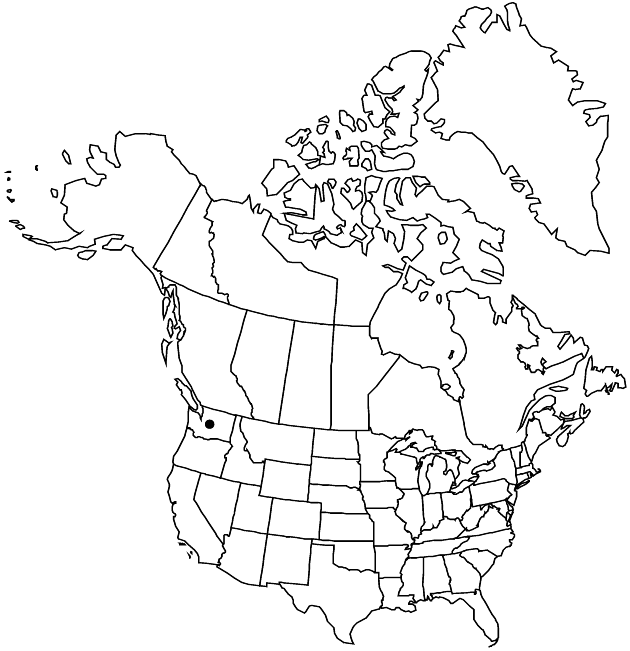Difference between revisions of "Chaenactis thompsonii"
in C. L. Hitchcock et al., Vasc. Pl. Pacif. N.W. 5: 123, fig. [p. 125]. 1955.
FNA>Volume Importer |
imported>Volume Importer |
||
| (6 intermediate revisions by 2 users not shown) | |||
| Line 1: | Line 1: | ||
{{Treatment/ID | {{Treatment/ID | ||
|accepted_name=Chaenactis thompsonii | |accepted_name=Chaenactis thompsonii | ||
| − | |accepted_authority=Cronquist | + | |accepted_authority=Cronquist |
|publications={{Treatment/Publication | |publications={{Treatment/Publication | ||
|title=in C. L. Hitchcock et al., Vasc. Pl. Pacif. N.W. | |title=in C. L. Hitchcock et al., Vasc. Pl. Pacif. N.W. | ||
| Line 8: | Line 8: | ||
}} | }} | ||
|common_names=Thompson’s pincushion | |common_names=Thompson’s pincushion | ||
| + | |special_status={{Treatment/ID/Special_status | ||
| + | |code=E | ||
| + | |label=Endemic | ||
| + | }}{{Treatment/ID/Special_status | ||
| + | |code=C | ||
| + | |label=Conservation concern | ||
| + | }} | ||
|basionyms= | |basionyms= | ||
|synonyms= | |synonyms= | ||
| Line 25: | Line 32: | ||
|distribution=Wash. | |distribution=Wash. | ||
|discussion=<p>Of conservation concern.</p><!-- | |discussion=<p>Of conservation concern.</p><!-- | ||
| − | --><p>Chaenactis thompsonii appears to be sister to C. evermannii; it is known from the mountains of central and northwestern Washington. The similar habits of C. thompsonii and C. ramosa (= C. douglasii var. douglasii) appear to result from convergent evolution in the distinctive habitat of their type localities (Wenatchee Mountains), not from a close genetic relationship as suggested by Cronquist.</p> | + | --><p><i>Chaenactis thompsonii</i> appears to be sister to <i>C. evermannii</i>; it is known from the mountains of central and northwestern Washington. The similar habits of <i>C. thompsonii</i> and C. ramosa (= <i>C. douglasii </i>var.<i> douglasii</i>) appear to result from convergent evolution in the distinctive habitat of their type localities (Wenatchee Mountains), not from a close genetic relationship as suggested by Cronquist.</p> |
|tables= | |tables= | ||
|references= | |references= | ||
| Line 34: | Line 41: | ||
-->{{#Taxon: | -->{{#Taxon: | ||
name=Chaenactis thompsonii | name=Chaenactis thompsonii | ||
| − | + | |authority=Cronquist | |
| − | |authority=Cronquist | ||
|rank=species | |rank=species | ||
|parent rank=section | |parent rank=section | ||
| Line 48: | Line 54: | ||
|publication title=in C. L. Hitchcock et al., Vasc. Pl. Pacif. N.W. | |publication title=in C. L. Hitchcock et al., Vasc. Pl. Pacif. N.W. | ||
|publication year=1955 | |publication year=1955 | ||
| − | |special status= | + | |special status=Endemic;Conservation concern |
| − | |source xml=https:// | + | |source xml=https://bitbucket.org/aafc-mbb/fna-data-curation/src/2e0870ddd59836b60bcf96646a41e87ea5a5943a/coarse_grained_fna_xml/V19-20-21/V21_1023.xml |
|tribe=Asteraceae tribe Heliantheae | |tribe=Asteraceae tribe Heliantheae | ||
|subtribe=Asteraceae (tribe Heliantheae) subtribe Chaenactidinae | |subtribe=Asteraceae (tribe Heliantheae) subtribe Chaenactidinae | ||
Latest revision as of 20:07, 5 November 2020
Perennials, 10–30 cm (not or scarcely cespitose, not matted); proximal indument thinning with age, grayish, arachnoid-sericeous to thinly lanuginose. Stems mostly 5–15+, ascending to erect. Leaves mostly cauline, 2–5 cm; largest blades ± elliptic, ± plane, 1-pinnately lobed; lobes mostly 2–5 pairs, remote, ± plane. Heads mostly 1–3 per stem. Peduncles ascending to erect, 2–5 cm. Involucres ± obconic. Phyllaries: longest (10–)12–15 mm; outer closely lanuginose, not stipitate-glandular, apices erect, ± rigid. Corollas 7–9 mm. Cypselae 7–9 mm (eglandular); pappi: longest scales 3.5–5 mm.
Phenology: Flowering Jun–Aug.
Habitat: Rocky or gravelly serpentine slopes, scree, talus, openings in or above conifer forests
Elevation: (900–)1200–2200 m
Discussion
Of conservation concern.
Chaenactis thompsonii appears to be sister to C. evermannii; it is known from the mountains of central and northwestern Washington. The similar habits of C. thompsonii and C. ramosa (= C. douglasii var. douglasii) appear to result from convergent evolution in the distinctive habitat of their type localities (Wenatchee Mountains), not from a close genetic relationship as suggested by Cronquist.
Selected References
None.
